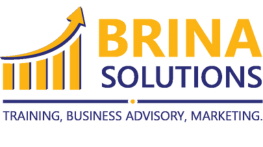
Productivity is a key driver of growth, and one of the most effective ways to enhance productivity is through corporate training. A well-designed corporate training program helps employees develop relevant skills, stay updated with industry trends, and feel more engaged in their roles. When employees are equipped with the right knowledge and skills, they can perform tasks more efficiently, make better decisions, and contribute to a company’s success.
In this blog post, we’ll explore how corporate training can boost productivity, the types of training that yield the best results, and practical tips for implementing an impactful training program.
1. Closing Skill Gaps
Skill gaps are a common productivity barrier. Corporate training addresses these gaps by ensuring employees have the knowledge and abilities required to perform at their best. Whether the focus is on technical skills, soft skills, or leadership, corporate training can directly impact productivity by empowering employees to work more efficiently and confidently.
Examples of Skill Gaps Corporate Training Can Address:
- Technical Skills: Training in software applications, data analysis, or industry-specific tools.
- Soft Skills: Enhancing communication, teamwork, and problem-solving abilities.
- Leadership Skills: Preparing future leaders and improving current managers’ effectiveness.
Tip: Conduct a skills assessment to identify areas where training is most needed. This will ensure that the training program is tailored and relevant, maximizing its impact on productivity.
2. Enhancing Employee Engagement
An engaged workforce is more motivated, efficient, and productive. Corporate training improves engagement by providing employees with opportunities to learn and grow, showing them that the company values their development.
Ways Training Boosts Engagement:
- Career Development: Training helps employees develop new skills, which can lead to career advancement and personal satisfaction.
- Increased Confidence: Employees who receive training feel more capable and are more likely to take on challenges.
- Sense of Belonging: A company that invests in its people fosters a culture of care and inclusion, which builds loyalty and dedication.
Example: Companies that offer ongoing professional development programs report higher retention rates and more productive teams, as employees feel valued and engaged.
3. Improving Efficiency Through Task-Specific Training
Task-specific training equips employees with the knowledge to handle their roles’ specific requirements, reducing errors and improving efficiency. For example, providing training on a new CRM system can help sales teams work faster, manage leads better, and close deals more effectively.
Task-Specific Training Examples:
- Software Training: For companies introducing new software, training ensures that employees know how to use it effectively, reducing time spent on troubleshooting.
- Process Training: Teaching employees standardized procedures minimizes errors and accelerates completion times.
- Customer Service Training: Training in customer relations helps customer-facing employees handle inquiries efficiently and provide better service.
Tip: Implement a training schedule that corresponds with new tools, processes, or job functions, so employees are equipped with up-to-date knowledge when they need it most.
4. Boosting Collaboration and Teamwork
Corporate training that focuses on teamwork and collaboration skills can enhance productivity by improving how employees work together. Training sessions on communication, project management, and conflict resolution foster a culture of collaboration, enabling teams to complete projects more efficiently and with fewer misunderstandings.
Benefits of Team-Oriented Training:
- Improved Communication: Clearer communication leads to fewer errors and smoother workflows.
- Shared Goals: Training sessions that emphasize team goals promote a sense of unity and shared purpose.
- Conflict Resolution: Training in conflict resolution helps employees handle disagreements constructively, maintaining focus on productivity.
Example: Project-based organizations that conduct regular teamwork training report higher efficiency and fewer project delays, as team members work seamlessly together.
5. Adapting to Industry Changes and Staying Competitive
In rapidly evolving industries, staying current with trends, regulations, and technology is essential. Corporate training enables companies to keep their workforce skilled and knowledgeable about industry changes, enhancing their ability to stay competitive.
Adapting to Changes Through Training:
- Technology Advancements: Regular training on the latest technology ensures that employees can leverage new tools to improve productivity.
- Regulatory Compliance: In industries with frequent regulatory changes, training helps employees remain compliant, reducing the risk of penalties.
- Market Trends: Training that highlights industry trends helps employees anticipate changes and innovate accordingly.
Tip: Set up regular training sessions or workshops to update employees on industry developments, keeping the team ahead of the curve.
6. Strengthening Leadership Skills
Good leadership is critical for driving productivity. Corporate training that focuses on leadership development equips current and future managers with skills like decision-making, delegation, and motivational techniques. These skills empower leaders to create high-performing teams and foster a positive work environment.
Key Areas of Leadership Training:
- Effective Delegation: Training leaders to delegate tasks appropriately frees up time for strategic thinking.
- Performance Management: Training in goal-setting and feedback helps managers drive team productivity and individual improvement.
- Motivational Skills: Teaching leaders how to motivate their teams boosts morale and engagement, leading to higher productivity.
Example: Companies that invest in leadership training often report increased productivity and employee satisfaction, as well-trained managers inspire better performance in their teams.
7. Building a Learning Culture
Encouraging continuous learning can have a lasting impact on productivity. When employees see learning as a core part of their job, they’re more likely to seek out new knowledge, improve their skills, and innovate. Establishing a learning culture makes training a natural part of the workplace, encouraging employees to stay productive and proactive.
How to Create a Learning Culture:
- Encourage Knowledge Sharing: Facilitate learning by encouraging employees to share their insights and skills with each other.
- Reward Skill Development: Recognize employees who take the initiative to learn new skills.
- Offer Accessible Learning Options: Use e-learning platforms, on-the-job training, and workshops to make learning more flexible and accessible.
Tip: Set up a rewards program to recognize employees who engage with training programs or show noticeable skill improvement. This promotes a positive attitude toward learning and motivates employees to stay productive.
Conclusion: Boosting Productivity with Corporate Training
Corporate training is a powerful tool for boosting productivity by addressing skill gaps, enhancing engagement, and equipping employees to adapt to changes. Investing in a well-structured training program not only improves individual and team performance but also strengthens the company’s overall competitive position. By making corporate training an integral part of the workplace, businesses can unlock the full potential of their workforce and create a sustainable path to growth and success.
Interested in implementing a corporate training program to boost productivity? Contact Brina Solutions to learn more about our customized training solutions designed to empower your team and drive results.







Leave a Reply